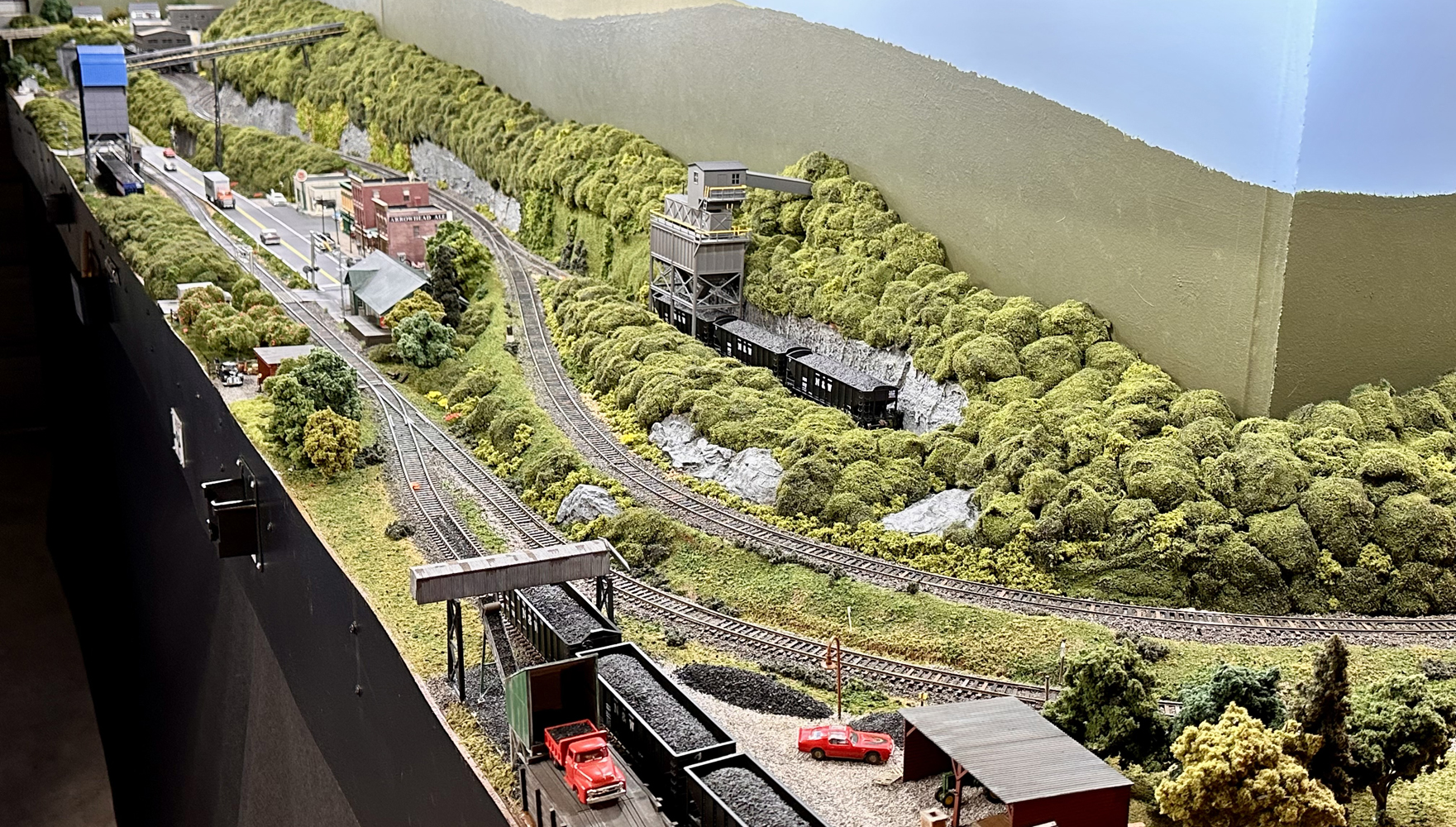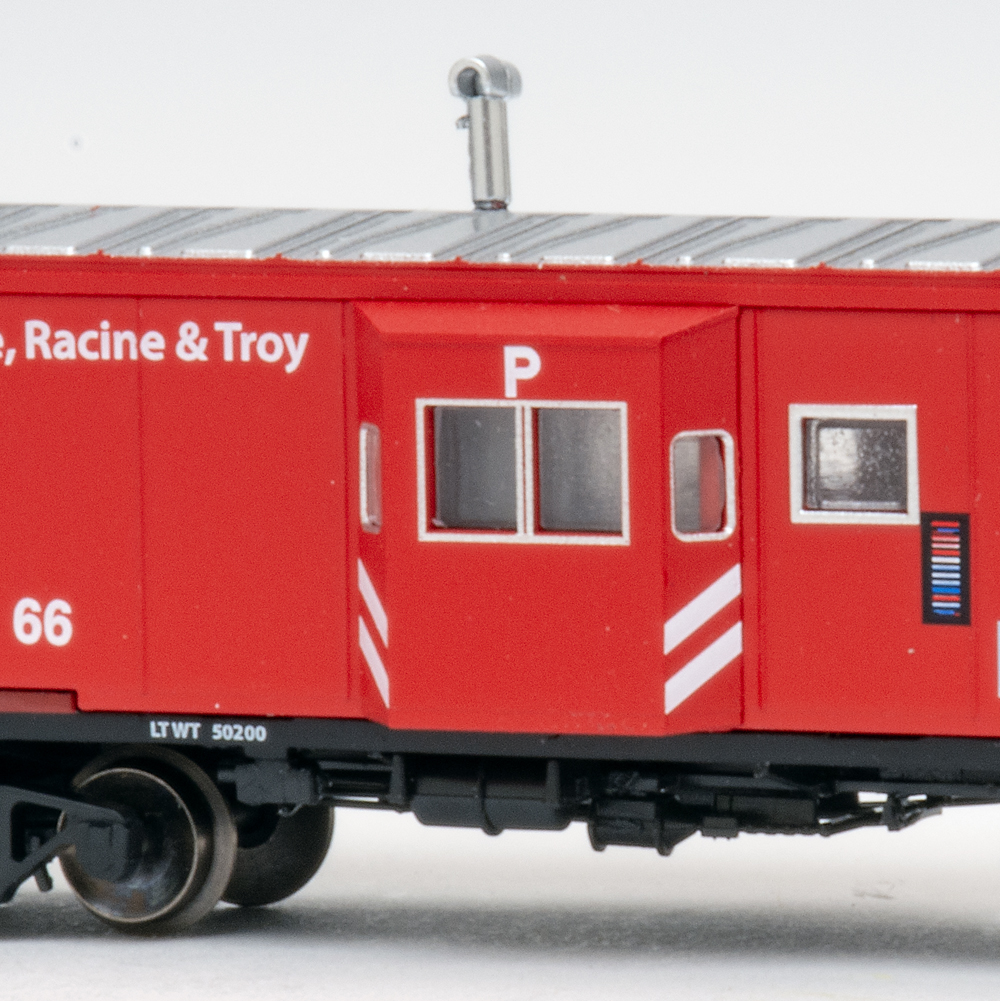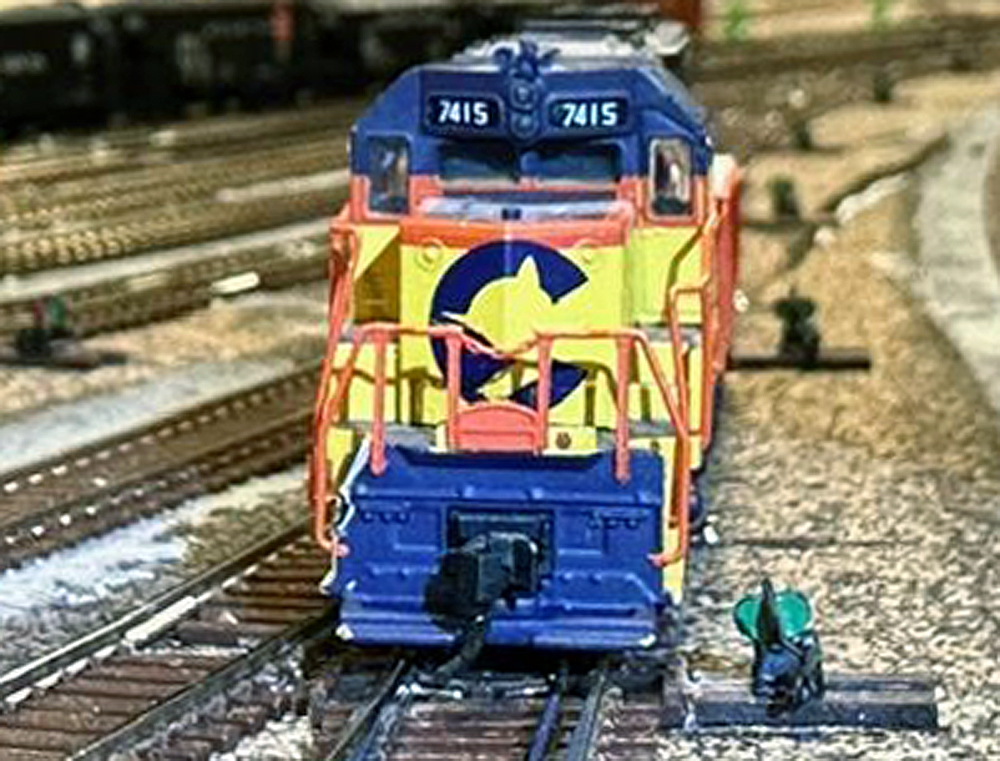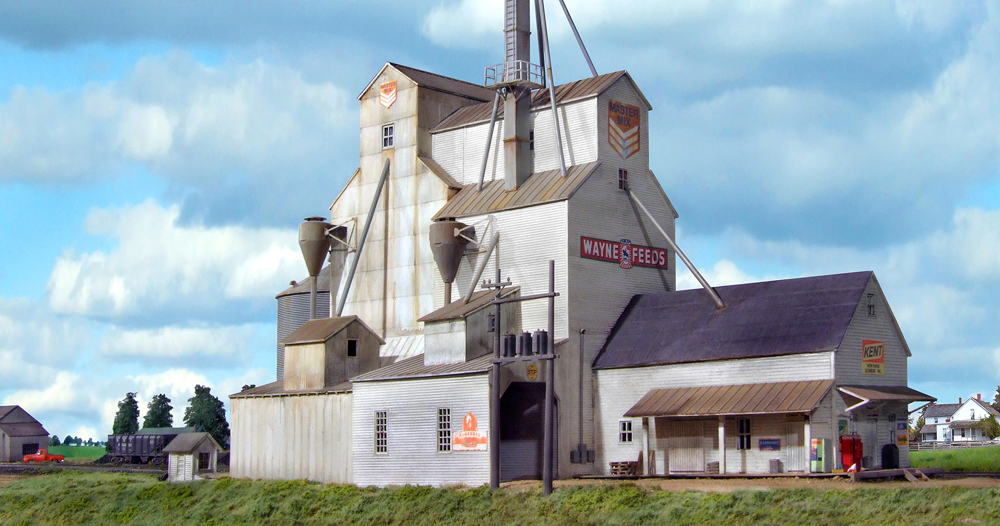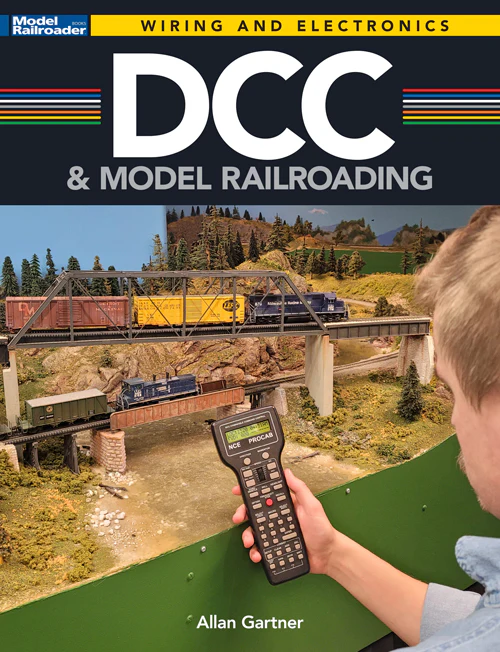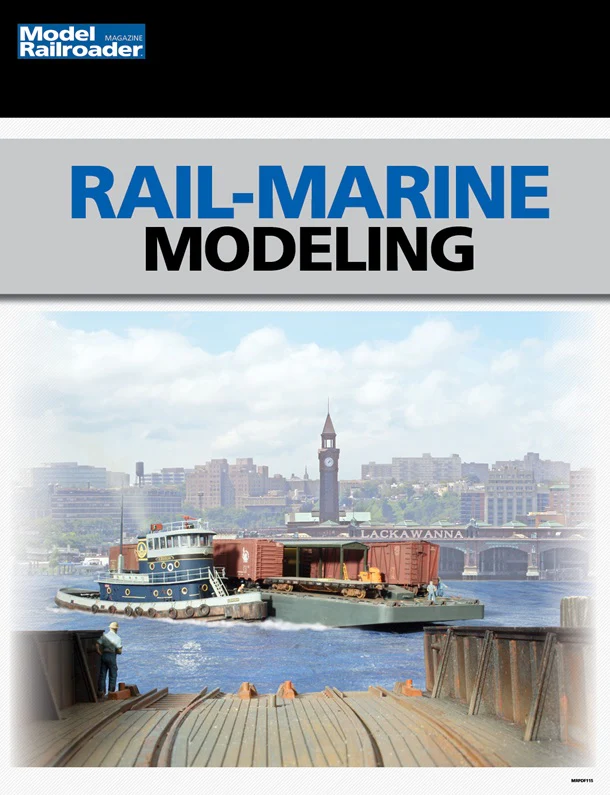A water level is a low-tech but precise way of measuring relative elevation in your yard. By using a water level, you can either find out how much elevation there is from one point to another or, if you are trying to make your railway level, it will tell you when you are there if you are removing or adding dirt. It is easily accurate to within ¼”.
It’s made from two yardsticks and a clear plastic hose (½” or larger, to allow the water to settle freely). The tube should be long enough to allow you to move the stick wherever you need it.
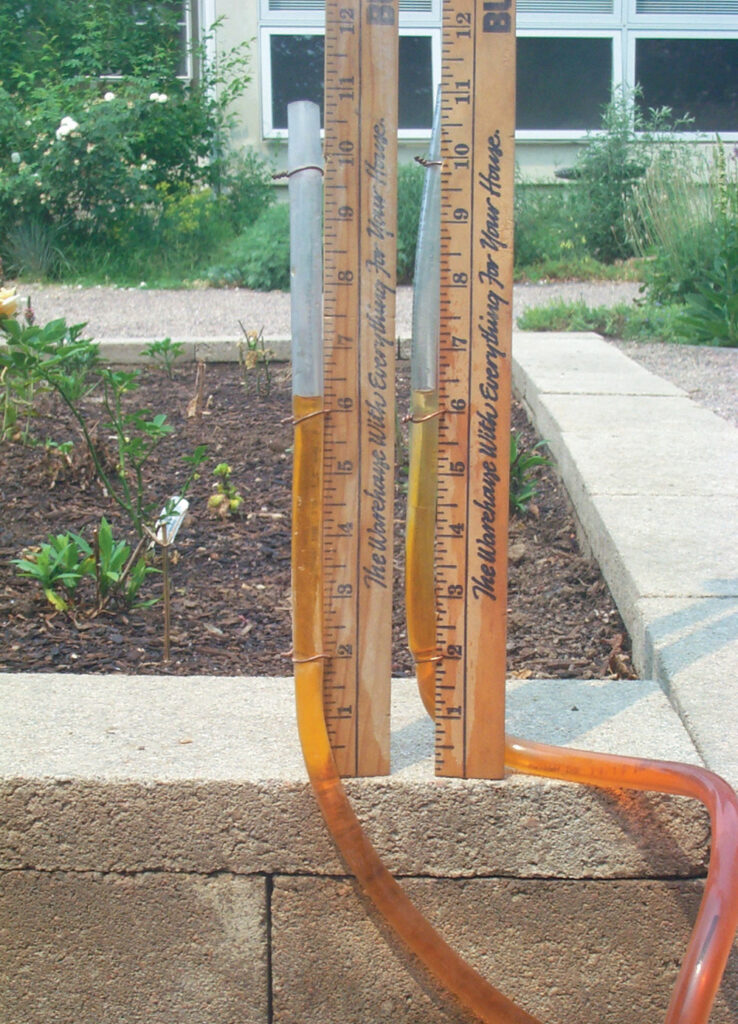
Fasten each end of the hose to the yardstick. You’ll see that I have mine measuring about 11” high on each yardstick. Fill the hose with water. The level of the water, when the two yardsticks are side by side, should be about in the middle of the area of the stick that the hose encompasses (see photo above). For better visibility, you may want to use food coloring to tint the water a little.
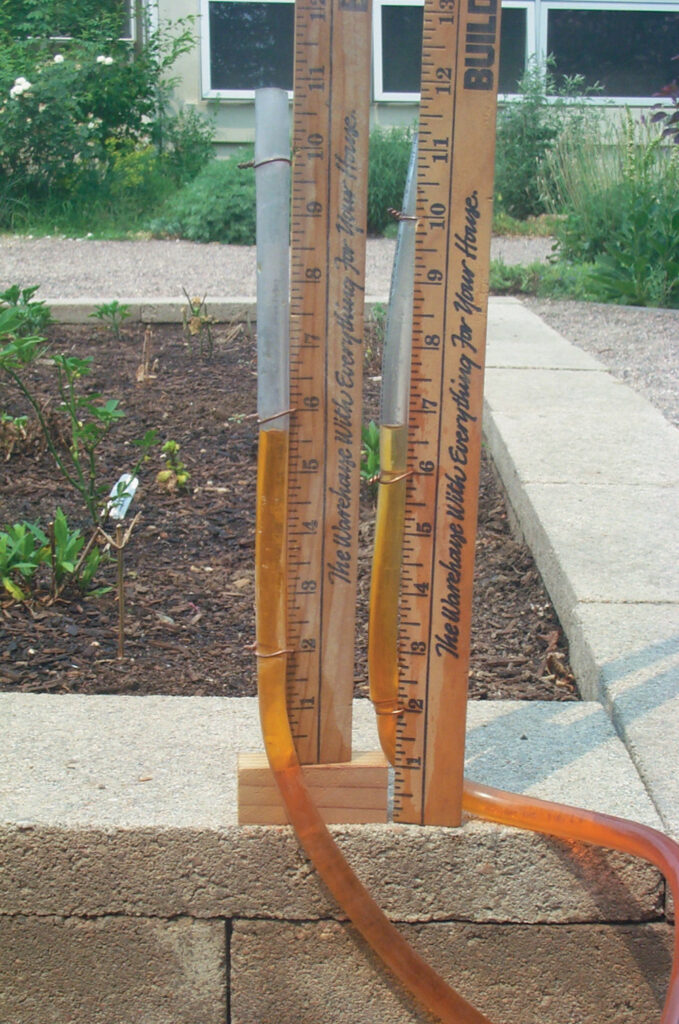
When one stick is raised, the water level remains the same. However, the reading on the two sticks will vary. Above, the stick on the left has been raised 1″. The reading on that stick is about 5¾”. The reading on the other stick is about 6¾”, giving a differential of 1″. (The higher stick will always have the lower reading.)
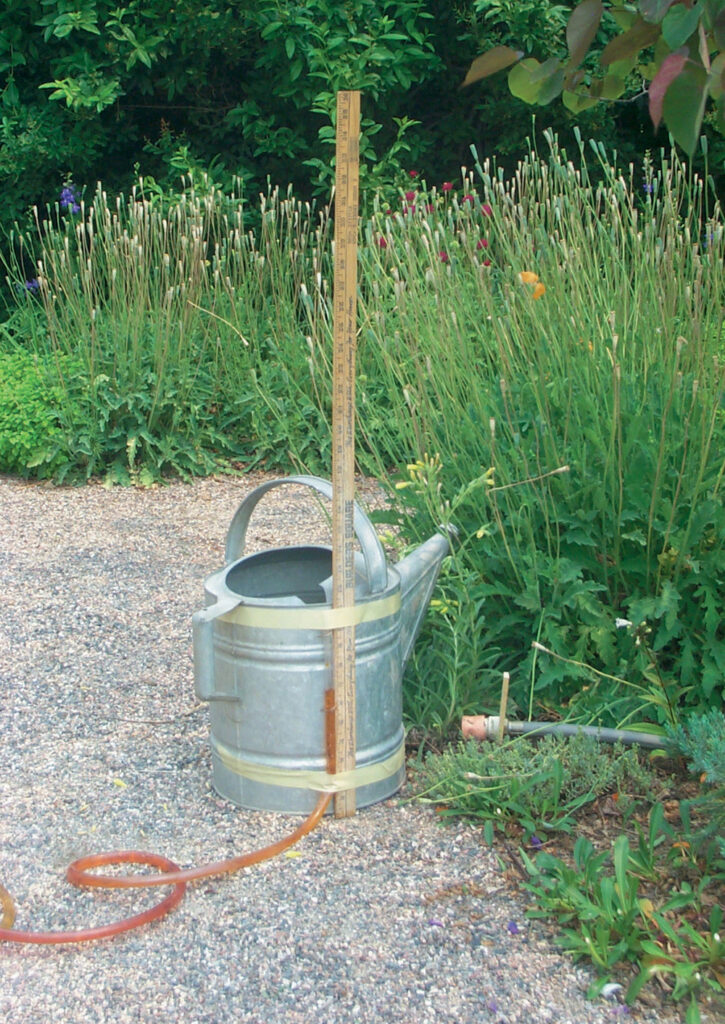
In use, one stick always stays in one place as a reference, while the other stick is moved around. This system works best with two people. If you are working by yourself, you can secure the stick to a can or stake, as in the photo above, and work alone. While moving around, be sure to keep your thumb on the top of the tube to keep the water from spilling out.






